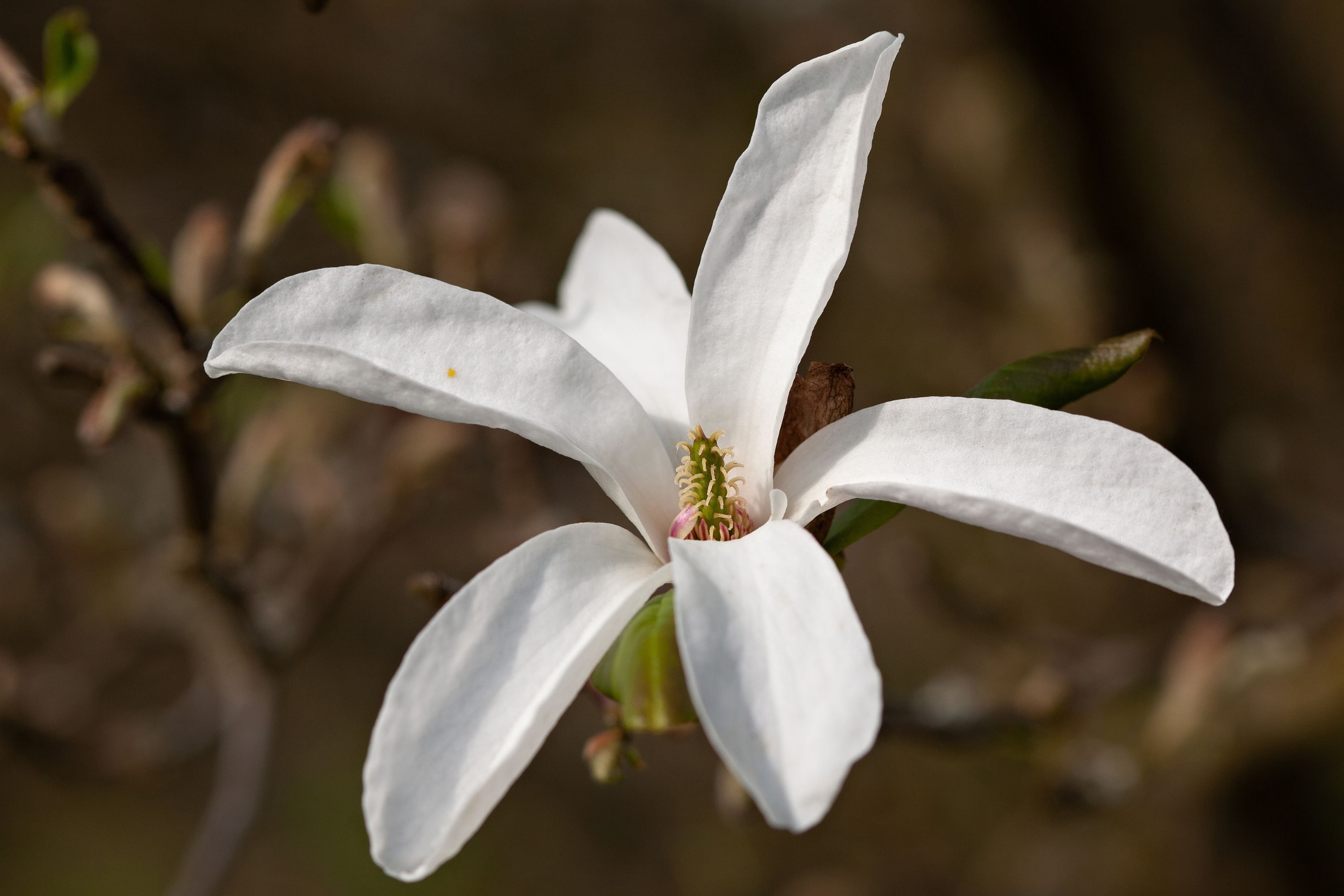Hope for Spring Flower
(Magnolia biondii)

Description
Magnolia biondii, or Biondi's magnolia, is a deciduous tree that flowers in late winter to early spring before leaf growth. Its early flowering nature gives it the name of the Hope for Spring Flower. Magnolia biondiiis a member of the family Magnoliaceae, which consists of more than 210 species. It is widely found in Northern China. It produces small white flowers every few years. Leave buds and petals of the plant are used to alleviate nasal obstruction and coughing in some parts of China. Magnolia biondii is widely distributed in China. It is commonly found in Gansu, Henan, Hubei, Shaanxi, Sichuan provinces. It is usually found in forests in the mountains. The plant was discovered and introduced to the Western hemisphere more than 70 years ago. Magnolia biondii is a deciduous tree that grows mainly in temperate forests in the mountains. It has a broadly conical to spreading habit. Magnolia biondii can grow up to 12 m (40 ft). Its bark has a pale grey, smooth appearance. It produces simple leaf type with ovate shape. In general, leaf size varies and can be up to 20 cm (8 in), long and 10 cm (4 in), across. In addition, they are taper-pointed at the tip and wedge-shaped at the base with a short petiole of up to 2 cm (3⁄4 in). Furthermore, leaves are arranged in an alternative pattern. Leaves have pinnate venation. Moreover, stamens and carpels are spirally arranged. Flowers of Magnolia biondii are small and white and have strong fragrance associated to them. They can grow up to 8 cm (3+1⁄4 in). Flowers parts are in sets of threes. In general, flowers have six petals and three sepals. More specifically, the petals are pink at the base and white at the top. Furthermore, flowers have cone-shaped receptacle that bears spirally arranged carpels from which styles emerge. Stamens are cream-white in color. In addition, flowers take several years to appear. Because of the small size and long growth period, Magnolia biondii is seldom used for ornamental purposes. Magnolia biondii produce aggregate fruits that consist of numerous separate carpels of one gynoecium. The fruits form in cylindrical cluster and protrude on a stalk. Each cluster can grow up to 14 cm (5+1⁄2 in) long. Individual fruitlets are red at first, then turn brown upon maturity.
Taxonomic tree:







